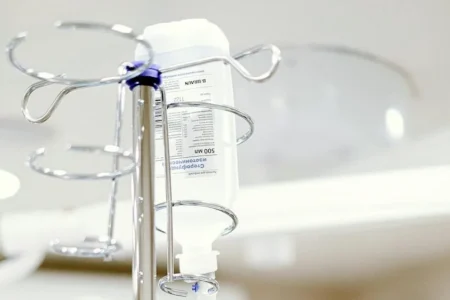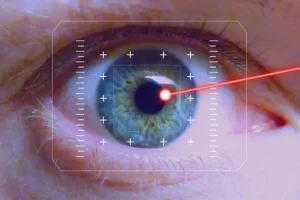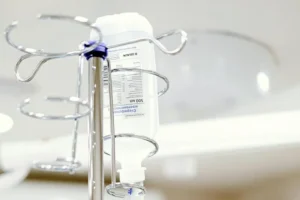Saving Time and Resources: Streamlining Healthcare Processes With Video Technology
- Updated on: Oct 9, 2024
- 3 min Read
- Published on Aug 29, 2023

The Power of Visual Communication in Healthcare
Human beings are inherently visual learners. A significant portion of our brain is dedicated to processing visual information, making videos an ideal tool for conveying medical knowledge. Whether it’s a medical consultation, training session, or patient education, videos can convey complex information more effectively than traditional methods. Visual aids help healthcare professionals explain intricate procedures to patients in a simplified manner, enhancing patient understanding and engagement.
Telemedicine Revolution
Telemedicine has gained significant traction in recent years, allowing patients to receive medical consultations and advice remotely. Video technology serves as the backbone of telemedicine, enabling doctors to diagnose patients and recommend treatments without requiring them to be physically present. This not only saves travel time but also expands healthcare access to remote or underserved areas.
Enhancing Training and Education
Medical professionals undergo rigorous training, and videos can be a game-changer in this regard. From surgical techniques to diagnostic procedures, videos provide a valuable resource for both learning and refreshing medical knowledge. Surgeons can watch surgical procedures in high-definition videos, medical students can access comprehensive tutorials, and healthcare staff can receive updated training, all of which contribute to a more informed and skilled workforce.
Efficient Patient Monitoring
For patients requiring continuous monitoring, video technology can offer a more efficient solution. Instead of constant in-person check-ups, patients can use wearable devices equipped with video capabilities to provide real-time insights to healthcare providers. This allows for more prompt interventions and reduces the need for repeated hospital visits.
Enhancing Patient Education Through Videos
Patient education is a cornerstone of effective healthcare. However, conveying medical information to patients who may not have a medical background can be challenging. Videos can bridge this gap by presenting information in a visually appealing way, ensuring patients understand their conditions, treatments, and preventive measures.
Remote Medical Training
Bringing in specialists from around the world for training sessions can be costly and time-consuming. With video technology, experts can conduct remote training sessions, sharing their knowledge and insights without the need for travel. This opens up opportunities for continuous learning and professional development for healthcare teams.
Personalized Patient Engagement
Video technology allows healthcare providers to establish a deeper connection with their patients. Sending personalized video messages, treatment updates, and post-operative instructions can enhance patient engagement and satisfaction. This personalized approach can lead to better patient outcomes and increased trust in the healthcare provider.
Minimizing Wait Times
Long wait times are a common frustration for patients in healthcare settings. Video technology can offer solutions to this problem. Patients can schedule virtual appointments, reducing the need to spend hours in waiting rooms. Additionally, video-based triage systems can prioritize cases based on urgency, optimizing resource allocation.
Accessible Health Resources
Incorporating video technology in healthcare processes opens doors to creating a repository of health resources. Patients can access video guides, self-care instructions, and preventive health tips, all of which contribute to better health literacy and proactive healthcare management.
Fostering Empathy and Emotional Support
Healthcare isn’t just about treatments; it’s also about providing emotional support. Videos can capture the personal stories of patients, helping others going through similar situations find solace and hope. Seeing real-life success stories can instill a sense of positivity and determination.
Videos as Therapeutic Tools
Beyond education, videos can serve as therapeutic tools. Guided meditation, relaxation exercises, and even virtual nature walks can alleviate stress and aid in the healing process. These videos offer a holistic approach to healthcare.
Also, fitness videos have gained enormous popularity in recent years and have become a mainstay in many people’s workout routines. With the rise of platforms such as YouTube and fitness apps, people can now easily access a wide library of instructive fitness videos. Simply by using an online video editor, these videos are created by fitness influencers, coaches, and professionals to share their knowledge and assist individuals in reaching their fitness objectives. Therefore, you get to work out with some of the top trainers in the industry, which will improve your fitness journey.
Overcoming Technological Barriers
Adopting video technology may require overcoming technological barriers, especially in regions with limited internet connectivity or older technology infrastructure. However, advancements in technology and efforts to bridge the digital divide are gradually making video healthcare solutions more accessible.
The Future: Video-Centric Healthcare
Video technology represents a glimpse into the future of healthcare. As technology continues to evolve, we can expect even more sophisticated applications, such as virtual reality-assisted surgeries, AI-powered diagnostics, and enhanced patient monitoring through smart devices.
Conclusion
The integration of videos in healthcare processes offers a multitude of benefits. As the healthcare industry embraces digital transformation, video technology stands out as a tool that can save time and resources, and ultimately contribute to better patient outcomes.












